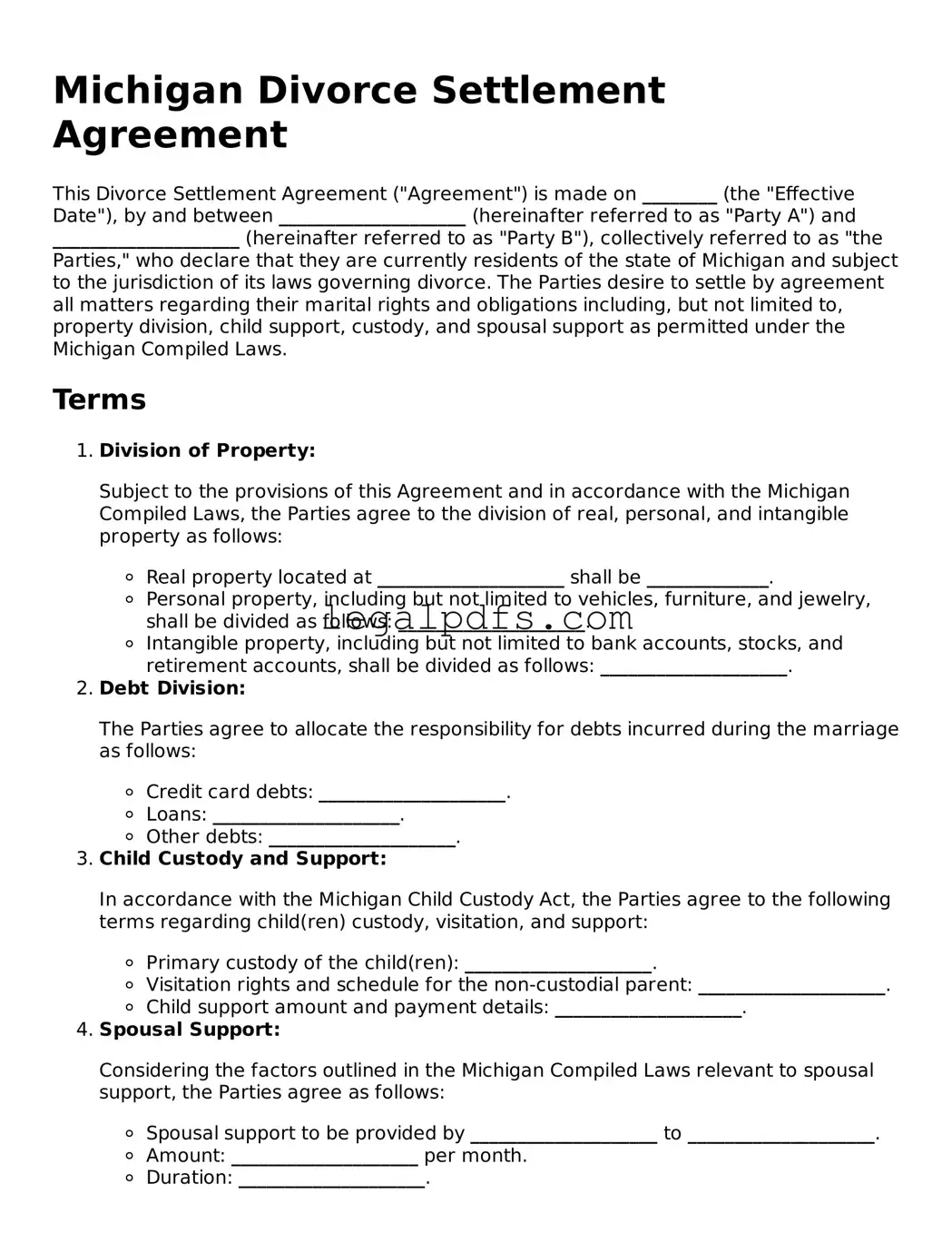What is a Michigan Divorce Settlement Agreement?
A Michigan Divorce Settlement Agreement is a legal document that outlines how a divorcing couple has agreed to divide their assets, debts, and other responsibilities. This agreement includes arrangements on child custody, spousal support, and any other relevant matters. It's negotiated and signed by both parties before being submitted to a court for final approval during the divorce proceedings.
Why do I need a Divorce Settlement Agreement in Michigan?
Having a Divorce Settlement Agreement is crucial because it clarifies the terms of your divorce, reduces misunderstandings, and provides a clear roadmap for the future. This agreement is vital for ensuring that both parties adhere to their agreed-upon terms regarding asset division, child support, and spousal support. Furthermore, it helps avoid the stress and expense of a court battle by finalizing decisions outside of court.
How can I create a Divorce Settlement Agreement in Michigan?
To create a Divorce Settlement Agreement in Michigan, you and your spouse should discuss and agree upon the division of your assets, debts, and any matters related to your children and support obligations. It's highly recommended to seek help from legal professionals to ensure that your agreement complies with Michigan laws and fully protects your interests. Once the agreement is drafted, both parties need to review and sign it before it can be submitted for court approval.
What should be included in a Michigan Divorce Settlement Agreement?
A comprehensive Divorce Settlement Agreement in Michigan should include, but is not limited to, details about the division of property and debts, child custody and visitation arrangements, child support, spousal support (alimony), and any other relevant issues. It should also contain both parties' full names, the date of the agreement, and specifics about any joint financial accounts or insurance policies.
Is a Divorce Settlement Agreement legally binding in Michigan?
Yes, once a Divorce Settlement Agreement is signed by both parties and approved by a Michigan court, it becomes legally binding. This means that both parties are legally obligated to comply with the terms set forth in the agreement. Violating the agreement can lead to legal consequences, including being held in contempt of court.
Can a Divorce Settlement Agreement be changed after it's been signed in Michigan?
Yes, but changes to a Divorce Settlement Agreement after it has been signed require both parties' consent and court approval. Modifications are typically granted only if there are significant changes in circumstances, such as a job loss, a move, or a change in a child's needs. To modify the agreement, you must file a request with the court explaining the reasons for the changes and provide evidence supporting your request.
What if my spouse and I cannot agree on the terms of our Divorce Settlement Agreement?
If you and your spouse are unable to agree on the terms of the Divorce Settlement Agreement, you may need to attend mediation or a settlement conference to resolve your disagreements. If these attempts fail, your divorce case may proceed to trial, where a judge will make decisions on your behalf. It's essential to make every effort to come to an agreement outside of court, as a trial can be both time-consuming and expensive.
